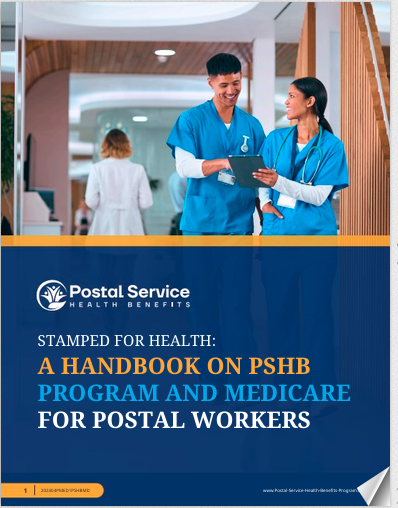Key Takeaways
-
Medicare Part A offers important hospital coverage, but you will still face significant out-of-pocket costs after meeting the deductible.
-
Pairing Medicare Part A with your Postal Service Health Benefits (PSHB) plan in retirement can help reduce these costs, but coordination matters.
What Medicare Part A Covers in 2025
Medicare Part A remains the foundation of hospital insurance coverage in 2025. If you are eligible for Medicare, you receive Part A either premium-free (with enough work history) or by paying a monthly premium if your work history is insufficient.
Under Part A, you are covered for several major types of inpatient care:
-
Inpatient hospital stays (after formal admission)
-
Skilled nursing facility care (after a qualifying hospital stay)
-
Home health care (when medically necessary)
-
Hospice care (for terminal illnesses)
However, while Part A handles significant hospital costs, it does not mean you walk away without expenses. Certain timelines, limits, and cost-sharing apply.
Hospital Stays: What Is Covered and What You Pay
When you are admitted to a hospital under Part A, Medicare pays for many services:
-
Semi-private room
-
Meals
-
Nursing services
-
Medications administered during inpatient care
-
Operating room and recovery room services
But before Medicare covers anything, you must meet the Part A deductible, which is $1,676 per benefit period in 2025.
Once you meet the deductible, your costs still continue depending on the length of your hospital stay:
-
Days 1-60: $0 coinsurance after deductible.
-
Days 61-90: $419 coinsurance per day.
-
Days 91-150: $838 coinsurance per day if using “lifetime reserve days.”
-
Beyond 150 days: You are responsible for all costs.
A “benefit period” starts the day you are admitted and ends when you have not received inpatient hospital or skilled nursing care for 60 consecutive days. A new deductible applies if a new benefit period begins.
Skilled Nursing Facility Care: Short-Term Help, Long-Term Costs
If your doctor recommends skilled nursing care after a hospital stay of at least three consecutive inpatient days, Part A may cover it.
Here is the cost structure for 2025:
-
Days 1-20: $0 coinsurance.
-
Days 21-100: $209.50 coinsurance per day.
-
Days 101 and beyond: All costs are your responsibility.
Skilled nursing facilities are meant for rehabilitation or short-term care—not long-term custodial care. If your stay extends past 100 days in a benefit period, you will need additional coverage or personal resources.
Home Health Care: Support With Limits
Medicare Part A covers medically necessary home health care, but certain conditions must be met:
-
You must be homebound.
-
Your doctor must certify you need intermittent skilled nursing care, physical therapy, or speech-language services.
-
The home health agency must be Medicare-certified.
If you qualify, you typically pay $0 for covered home health services. However, you are responsible for 20% of the Medicare-approved amount for durable medical equipment (like wheelchairs and oxygen supplies) needed at home.
Hospice Care: Compassionate End-of-Life Coverage
Hospice care under Part A is designed for individuals with a life expectancy of six months or less, as certified by a doctor.
Medicare covers nearly all hospice services:
-
Pain management medications
-
Nursing and physician services
-
Homemaker and aide services
-
Counseling services
-
Short-term inpatient respite care
You may need to pay a small copayment of up to $5 per prescription for outpatient drugs for symptom control or pain relief. Inpatient respite care may also involve a 5% coinsurance.
Otherwise, hospice care under Part A is largely free.
Costs That Medicare Part A Does Not Cover
While Part A provides substantial hospital coverage, several important costs remain uncovered:
-
Private room charges (unless medically necessary)
-
Personal items (television, phone, toiletries)
-
Long-term custodial care (help with bathing, dressing, eating)
-
Blood (unless replaced or covered by other means)
-
Services outside of a Medicare-certified facility
Without extra coverage, these costs can add up quickly, especially for longer hospitalizations or recovery periods.
How Your PSHB Plan Can Help
As a Postal Service retiree, you have access to PSHB coverage that works alongside Medicare. Having a PSHB plan can help fill many of the gaps that Medicare Part A leaves behind.
Depending on your specific PSHB plan, you might see:
-
Waived or reduced deductibles when Medicare pays first
-
Lower coinsurance amounts for hospital stays
-
Coverage for some services Medicare does not cover
-
Prescription drug coverage that extends beyond hospice care needs
Pairing PSHB with Medicare is not automatic—you need to enroll in both and ensure they coordinate properly.
Why Timing and Coordination Matter in 2025
When you turn 65 or become Medicare-eligible, you must actively enroll in Medicare Part A (and Part B, if required for your PSHB plan) to maintain full PSHB benefits. This is especially important for postal retirees in 2025, as the new PSHB structure depends heavily on Medicare integration.
Missing your Medicare enrollment window could result in:
-
Higher premiums
-
Penalties
-
Limited PSHB coverage
Most PSHB plans require Medicare Part A and Part B enrollment once eligible, unless you qualify for an exemption (such as retirement before 2025 or living abroad).
Important Duration Limits to Keep in Mind
Understanding timelines is crucial to avoiding unexpected bills:
-
Benefit periods restart after 60 days without inpatient or skilled nursing facility care.
-
Lifetime reserve days provide 60 extra days in your lifetime for hospital stays beyond 90 days—but once used, they are gone.
-
Skilled nursing coverage maxes out after 100 days per benefit period.
In 2025, planning ahead to coordinate Medicare and PSHB benefits is essential to manage these limits effectively.
Out-of-Pocket Cost Planning Strategies
To protect yourself from high hospital costs, consider these strategies:
-
Confirm your Medicare enrollment as soon as eligible.
-
Understand your PSHB plan’s benefits with Medicare.
-
Keep track of benefit periods and hospital admissions.
-
Prepare financially for coinsurance amounts, especially after the 60th day of hospitalization.
-
Use PSHB supplemental benefits to help with costs Medicare Part A does not cover.
Financial planning around hospital care is more important than ever for retirees in 2025.
Common Misunderstandings About Medicare Part A
Many retirees incorrectly assume that:
-
Medicare Part A covers all hospital costs (it does not after 60 days)
-
Skilled nursing care is covered indefinitely (only up to 100 days)
-
Hospice care requires no cost-sharing (some copayments apply)
-
Home health services mean custodial care (Medicare covers medical services, not help with everyday activities)
Being clear about these facts can help you avoid surprises if you need care.
Recap: What You Still Owe After the Part A Deductible
Even after paying the $1,676 deductible in 2025, you will still owe:
-
Daily coinsurance after 60 days in the hospital
-
Daily coinsurance after 20 days in a skilled nursing facility
-
Costs for non-covered services
-
Possible coinsurance for respite and hospice care prescriptions
Having your PSHB coverage work alongside Medicare can make a significant difference in reducing or eliminating some of these burdens.
Preparing for Hospital Costs With PSHB and Medicare
Your hospital insurance needs do not end when you enroll in Medicare Part A. Understanding what Medicare covers, what it does not, and how your PSHB plan fits into the picture ensures you are better protected.
If you are unsure about your specific PSHB options or how they coordinate with Medicare Part A, it is a good idea to speak with a licensed insurance agent listed on this website. They can walk you through your coverage choices, timelines, and cost expectations.







